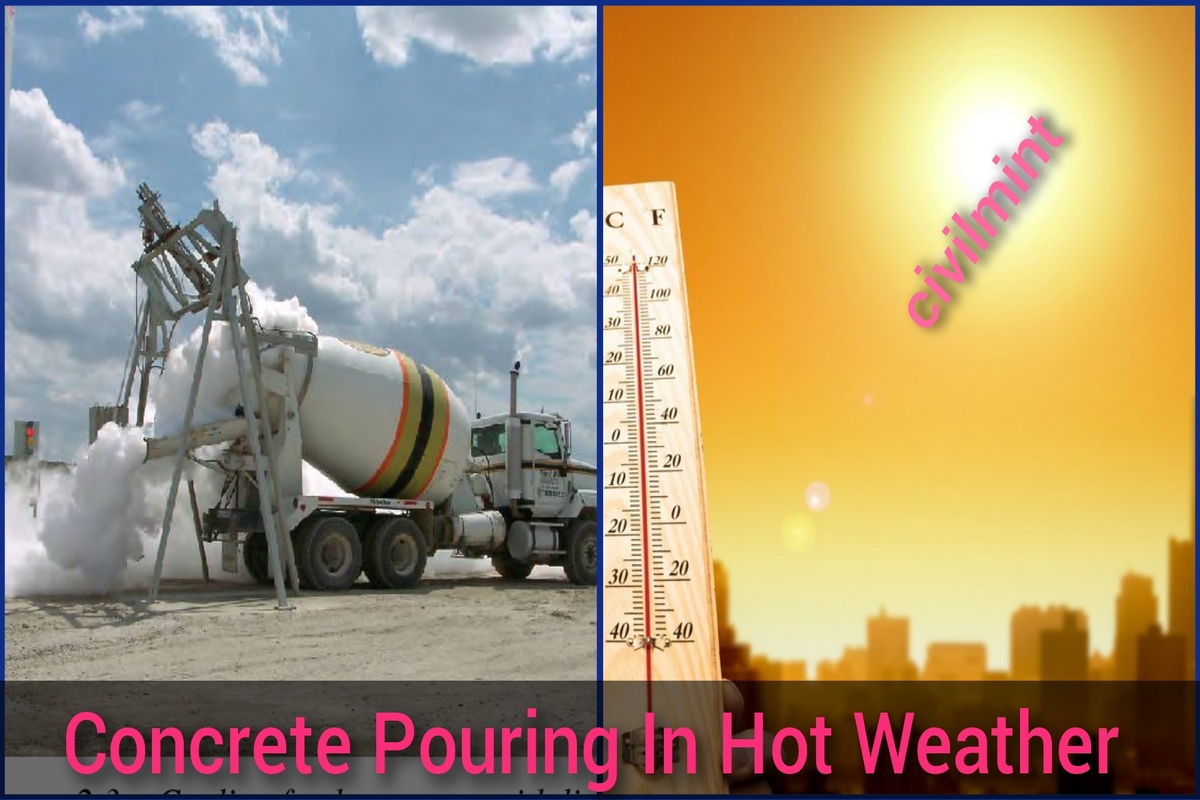Pouring concrete in hot weather can be a challenging task if not done properly. This article describes how to pour concrete in challenging and hot climates.
Table of Contents
Introduction
Concrete is one of the most commonly used building materials in construction industry. It is strong, durable, and versatile, making it a preferred choice for various construction projects. However, working with concrete during hot weather conditions can be difficult.
In this article, we will discuss the challenges associated with concrete pouring in hot weather and provide tips to ensure successful concrete pouring in hot weather.
Challenges of Concrete Pouring in Hot Weather
Hot weather conditions can significantly affect the quality of poured concrete.
Here are some challenges faced during concrete pouring in hot weather.
- Rapid Setting of Concrete: During hot weather, the rate of cement hydration increases, leading to the rapid setting of concrete. This can cause problems such as cracks, shrinkage, and reduced strength.
- Evaporation: High temperatures cause rapid evaporation of moisture from the concrete surface, which can lead to plastic shrinkage cracks, weakened concrete, and reduced durability.
- Thermal Cracking: When hot concrete is exposed to cool air or water, it can undergo rapid cooling, leading to thermal shock and cracking.
- Difficulty in Placing and Finishing: Hot weather conditions can make it challenging to place and finish the concrete due to the faster setting times.
How To Pour Concrete Hot Weather

- Plan Ahead: Before starting the concrete pouring process, it is essential to plan the project carefully. This includes scheduling the pour during cooler hours of the day, choosing appropriate materials, and ensuring that all equipment and personnel are in place.
- Use Cold Water: Using cold water to mix the concrete can help reduce the concrete’s temperature, slowing down the rate of hydration and extending the working time. The use of chilled water can also help reduce the risk of thermal cracking.
- Use Admixtures: Admixtures such as retarding agents and water reducers can help slow down the rate of hydration and increase the workability of the concrete.
- Cover the Concrete: After the concrete has been placed and finished, covering it with a protective material such as plastic sheets or wet burlap can help retain moisture, prevent rapid evaporation, and reduce the risk of plastic shrinkage cracks.
- Use Shade: If possible, place the concrete pour under shade to reduce the temperature and minimize the effects of direct sunlight.
- Adjust the Mix: Adjusting the concrete mix to include more water can help increase workability and reduce the risk of rapid setting. However, this must be done carefully as adding too much water can weaken the concrete.
Summing Up
Pouring concrete in hot weather conditions can be a difficult task, but it can be done successfully by following tips and techniques as I described.
The first step is to understand the challenges that come with hot weather and take measures to overcome them.
By planning ahead and following the guidelines discussed in this article, you can ensure that your concrete pouring project is a success, and that the final product is strong, durable, and of high quality.
Faqs
The maximum allowable temperature for hot-weather concreting is 95°F (35ºC) at the time of discharge, as per ACI 301-20 and ACI 305.1-14.
The ACI 305.1-14 and ACI 305R-20 “Guide to Hot Weather Concreting” provide guidelines and resources for hot-weather concreting. For temperature, volume changes, and cracking problems associated with mass concrete, refer to section 8 of ACI 301-20, ACI 207.1R-05 “Guide to Mass Concrete”, 207.2R-07 “Report on Thermal and Volume Change Effects on Cracking of Mass Concrete”, and 224R-01 “Control of Cracking of Concrete Structures”.
Reference: ACI 305 R – 20
